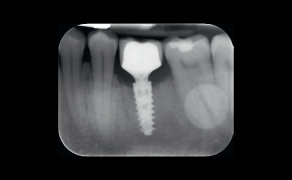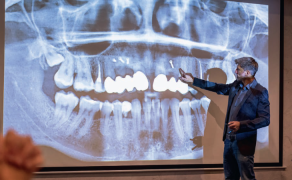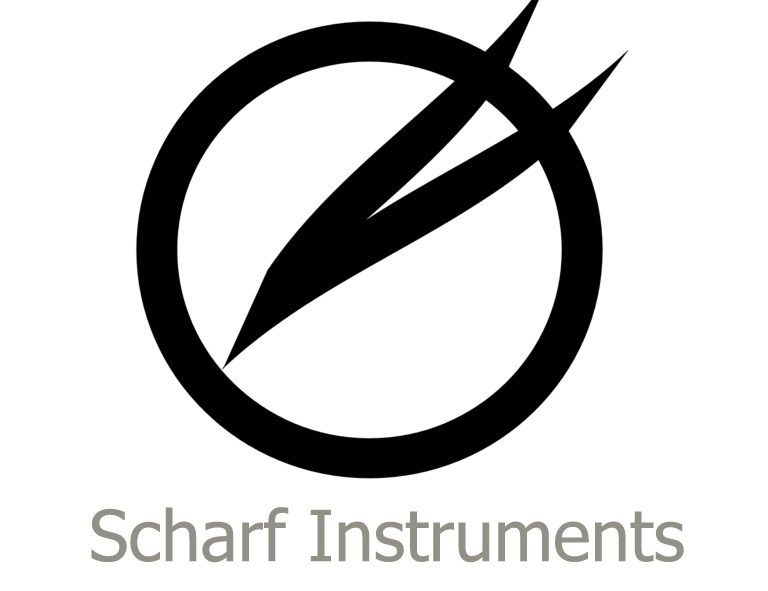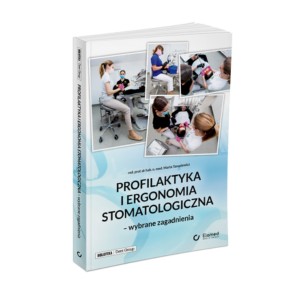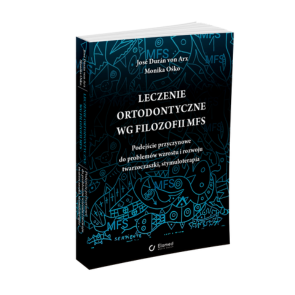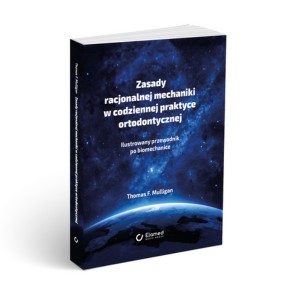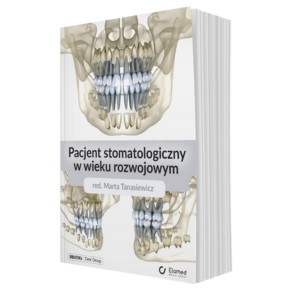Wykorzystanie nowego systemu pilników rotacyjnych w codziennej praktyce endodontycznej
Patient referred for radiography which showed a large filling on the distal surface up to pulp chamber, no changes within the periapical tissue. The X-ray evidenced unfilled mesial canal, a leaky filling and changes within the periapical tissue near the mesial root and in the area of furcation of tooth 37 (fig. 8). In light of the strong pain during tapping test of tooth 36, the patient was referred for treatment of the tooth. In the first phase of therapy the tooth was prepared for endodontic treatment: the leaky filling was removed, cleared of caries and the damaged tissues were restored. In the following phase the patient had a dental dam placed and the tooth chamber was prepared to gain access to root canals (fig. 9). At preparation of the chamber, the pulp was qualified as partially necrotic (necrosis pulpae partialis).
Using a microscope, the outlets of three root canals were located: distal (D), mesiolingual (ML) and mesiobuccal (MB). The length of the canals was determined with a root canal meter and was the following: D: 20.5 mm, ML: 18.5 mm, MB: 19 mm. The canals were provisionally prepared with manual tools to size 20 according to ISO to make the so-called glide path for rotary instruments. In the following step the distal canal was prepared. For this purpose Endostar E3 rotary system and VDW Gold endodontic handpiece with manual settings of torque and rotation speed of E3 files according to [...]

którzy są subskrybentami naszego portalu.
i ciesz się dostępem do bazy merytorycznej wiedzy!




